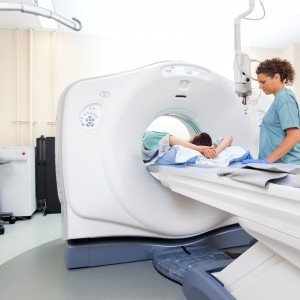Systemic Sclerosis in Young People: Imaging Improves Diagnosis

 Radiologists are essential for diagnosis and further testing of pediatric patients with systemic sclerosis (SSc), according to a report published by researchers at the University of Washington Medical Center, Seattle. The paper, titled Multimodality Thoracic Imaging of Juvenile Systemic Sclerosis: Emphasis on Clinical Correlation and High-Resolution CT of Pulmonary Fibrosis, appeared in the February 2015 issue of the American Journal of Roentgenology.
Radiologists are essential for diagnosis and further testing of pediatric patients with systemic sclerosis (SSc), according to a report published by researchers at the University of Washington Medical Center, Seattle. The paper, titled Multimodality Thoracic Imaging of Juvenile Systemic Sclerosis: Emphasis on Clinical Correlation and High-Resolution CT of Pulmonary Fibrosis, appeared in the February 2015 issue of the American Journal of Roentgenology.
SSc is disease of the connective tissue that involves many different parts of the body. It is characterized by abnormal blood vessels (vasculopathy) and fibrosis — the thickening and scarring of connective tissue.
Juvenile systemic sclerosis (JSSc) is an infrequently occurring disease with an unknown cause that occurs in children 16 and younger. It differs from adult SSc in symptoms and how it progresses. Two major types occur, one involving rapid deterioration, heart problems and progression to death. The second type is more chronic and less likely to be fatal.
[adrotate group=”4″]
Scarring and thickening (fibrosis) of the skin, muscles, and internal organs can occur in JSSc as well as abnormalities of the circulatory system and the immune system. Heart and lung complications are the leading cause of death and impairment caused by this disease. Scarring of the lungs (pulmonary fibrosis) is common and has been well-studied. Circulatory system and heart problems, as well as throat involvement has received less attention by the medical community, though these conditions may also occur in JSSc.
The researchers, led by , discussed common symptoms and diagnostic tests used for JSSc. Their analysis including a review of recent medical literature that focused on several tests including computerized axial tomography (CT scanning) and magnetic resonance imaging (MRI).
Based on their review, imaging techniques and test are very important for diagnosis and prognosis of JSSc. Screening pulmonary function tests and high-resolution CT increases the possibility of interstitial lung disease detection. Cardiac health should be monitored closely.
[adrotate group=”3″]
The study authors concluded that “Radiologists play a pivotal role in the initial diagnosis and follow-up evaluation of pediatric patients with systemic sclerosis. Treatment decisions and prognostic assessment are directly related to imaging findings along with clinical evaluation.”
Because JSSc is such a rare disorder and because the disease differs from SSc in adults, further studies specifically in children are greatly needed. Such studies could help to further establish characteristics, diagnosis, course of the illness and treatments. Further understanding of cardiac effects in particular, could help to establish measures to prevent death caused by JSSc.







